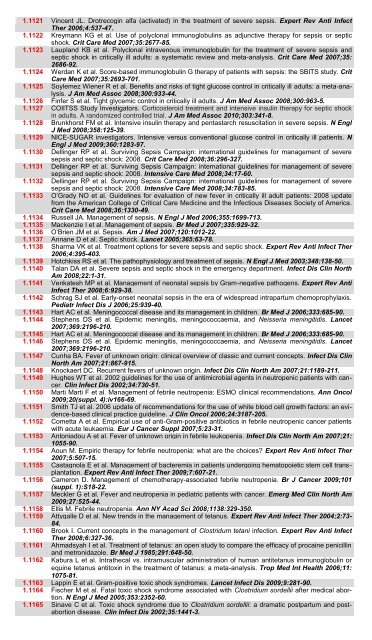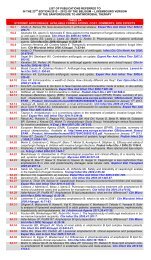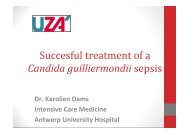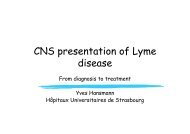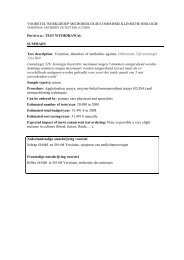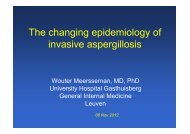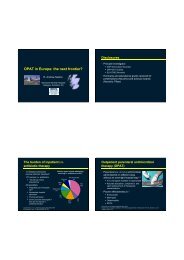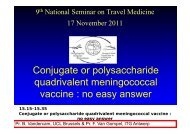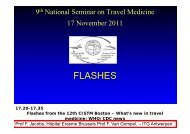TABLE 39A LIST OF PUBLICATIONS REFERRED TO IN THE ...
TABLE 39A LIST OF PUBLICATIONS REFERRED TO IN THE ...
TABLE 39A LIST OF PUBLICATIONS REFERRED TO IN THE ...
Create successful ePaper yourself
Turn your PDF publications into a flip-book with our unique Google optimized e-Paper software.
1.1121 Vincent JL. Drotrecogin alfa (activated) in the treatment of severe sepsis. Expert Rev Anti Infect<br />
Ther 2006;4:537-47.<br />
1.1122 Kreymann KG et al. Use of polyclonal immunoglobulins as adjunctive therapy for sepsis or septic<br />
shock. Crit Care Med 2007;35:2677-85.<br />
1.1123 Laupland KB et al. Polyclonal intravenous immunoglobulin for the treatment of severe sepsis and<br />
septic shock in critically ill adults: a systematic review and meta-analysis. Crit Care Med 2007;35:<br />
2686-92.<br />
1.1124 Werdan K et al. Score-based immunoglobulin G therapy of patients with sepsis: the SBITS study. Crit<br />
Care Med 2007;35:2693-701.<br />
1.1125 Soylemez Wiener R et al. Benefits and risks of tight glucose control in critically ill adults: a meta-analysis.<br />
J Am Med Assoc 2008;300:933-44.<br />
1.1126 Finfer S et al. Tight glycemic control in critically ill adults. J Am Med Assoc 2008;300:963-5.<br />
1.1127 COIITSS Study Investigators. Corticosteroid treatment and intensive insulin therapy for septic shock<br />
in adults. A randomized controlled trial. J Am Med Assoc 2010;303:341-8.<br />
1.1128 Brunkhorst FM et al. Intensive insulin therapy and pentastarch resuscitation in severe sepsis. N Engl<br />
J Med 2008;358:125-39.<br />
1.1129 NICE-SUGAR investigators. Intensive versus conventional glucose control in critically ill patients. N<br />
Engl J Med 2009;360:1283-97.<br />
1.1130 Dellinger RP et al. Surviving Sepsis Campaign: international guidelines for management of severe<br />
sepsis and septic shock: 2008. Crit Care Med 2008;36:296-327.<br />
1.1131 Dellinger RP et al. Surviving Sepsis Campaign: international guidelines for management of severe<br />
sepsis and septic shock: 2008. Intensive Care Med 2008;34:17-60.<br />
1.1132 Dellinger RP et al. Surviving Sepsis Campaign: international guidelines for management of severe<br />
sepsis and septic shock: 2008. Intensive Care Med 2008;34:783-85.<br />
1.1133 O‘Grady NO et al. Guidelines for evaluation of new fever in critically ill adult patients: 2008 update<br />
from the American College of Critical Care Medicine and the Infectious Diseases Society of America.<br />
Crit Care Med 2008;36:1330-49.<br />
1.1134 Russell JA. Management of sepsis. N Engl J Med 2006;355:1699-713.<br />
1.1135 Mackenzie I et al. Management of sepsis. Br Med J 2007;335:929-32.<br />
1.1136 O‘Brien JM et al. Sepsis. Am J Med 2007;120:1012-22.<br />
1.1137 Annane D et al. Septic shock. Lancet 2005;365:63-78.<br />
1.1138 Sharma VK et al. Treatment options for severe sepsis and septic shock. Expert Rev Anti Infect Ther<br />
2006;4:395-403.<br />
1.1139 Hotchkiss RS et al. The pathophysiology and treatment of sepsis. N Engl J Med 2003;348:138-50.<br />
1.1140 Talan DA et al. Severe sepsis and septic shock in the emergency department. Infect Dis Clin North<br />
Am 2008;22:1-31.<br />
1.1141 Venkatesh MP et al. Management of neonatal sepsis by Gram-negative pathogens. Expert Rev Anti<br />
Infect Ther 2008;6:929-38.<br />
1.1142 Schrag SJ et al. Early-onset neonatal sepsis in the era of widespread intrapartum chemoprophylaxis.<br />
Pediatr Infect Dis J 2006;25:939-40.<br />
1.1143 Hart AC et al. Meningococcal disease and its management in children. Br Med J 2006;333:685-90.<br />
1.1144 Stephens DS et al. Epidemic meningitis, meningococcaemia, and Neisseria meningitidis. Lancet<br />
2007;369:2196-210.<br />
1.1145 Hart AC et al. Meningococcal disease and its management in children. Br Med J 2006;333:685-90.<br />
1.1146 Stephens DS et al. Epidemic meningitis, meningococcaemia, and Neisseria meningitidis. Lancet<br />
2007;369:2196-210.<br />
1.1147 Cunha BA. Fever of unknown origin: clinical overview of classic and current concepts. Infect Dis Clin<br />
North Am 2007;21:867-915.<br />
1.1148 Knockaert DC. Recurrent fevers of unknown origin. Infect Dis Clin North Am 2007;21:1189-211.<br />
1.1149 Hughes WT et al. 2002 guidelines for the use of antimicrobial agents in neutropenic patients with cancer.<br />
Clin Infect Dis 2002;34:730-51.<br />
1.1150 Marti Marti F et al. Management of febrile neutropenia: ESMO clinical recommendations. Ann Oncol<br />
2009;20(suppl. 4):iv166-69.<br />
1.1151 Smith TJ et al. 2006 update of recommendations for the use of white blood cell growth factors: an evidence-based<br />
clinical practice guideline. J Clin Oncol 2006;24:3187-205.<br />
1.1152 Cometta A et al. Empirical use of anti-Gram-positive antibiotics in febrile neutropenic cancer patients<br />
with acute leukaemia. Eur J Cancer Suppl 2007;5:23-31.<br />
1.1153 Antoniadou A et al. Fever of unknown origin in febrile leukopenia. Infect Dis Clin North Am 2007;21:<br />
1055-90.<br />
1.1154 Aoun M. Empiric therapy for febrile neutropenia: what are the choices? Expert Rev Anti Infect Ther<br />
2007;5:507-15.<br />
1.1155 Castagnola E et al. Management of bacteremia in patients undergoing hematopoietic stem cell transplantation.<br />
Expert Rev Anti Infect Ther 2009;7:607-21.<br />
1.1156 Cameron D. Management of chemotherapy-associated febrile neutropenia. Br J Cancer 2009;101<br />
(suppl. 1):S18-22.<br />
1.1157 Meckler G et al. Fever and neutropenia in pediatric patients with cancer. Emerg Med Clin North Am<br />
2009;27:525-44.<br />
1.1158 Ellis M. Febrile neutropenia. Ann NY Acad Sci 2008;1138:329-350.<br />
1.1159 Attygalle D et al. New trends in the management of tetanus. Expert Rev Anti Infect Ther 2004;2:73-<br />
84.<br />
1.1160 Brook I. Current concepts in the management of Clostridum tetani infection. Expert Rev Anti Infect<br />
Ther 2008;6:327-36.<br />
1.1161 Ahmadsyah I et al. Treatment of tetanus: an open study to compare the efficacy of procaine penicillin<br />
and metronidazole. Br Med J 1985;291:648-50.<br />
1.1162 Kabura L et al. Intrathecal vs. intramuscular administration of human antitetanus immunoglobulin or<br />
equine tetanus antitoxin in the treatment of tetanus: a meta-analysis. Trop Med Int Health 2006;11:<br />
1075-81.<br />
1.1163 Lappin E et al. Gram-positive toxic shock syndromes. Lancet Infect Dis 2009;9:281-90.<br />
1.1164 Fischer M et al. Fatal toxic shock syndrome associated with Clostridium sordellii after medical abortion.<br />
N Engl J Med 2005;353:2352-60.<br />
1.1165 Sinave C et al. Toxic shock syndrome due to Clostridium sordellii: a dramatic postpartum and postabortion<br />
disease. Clin Infect Dis 2002;35:1441-3.


